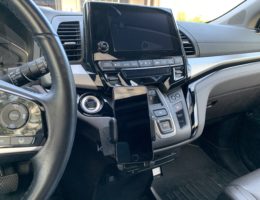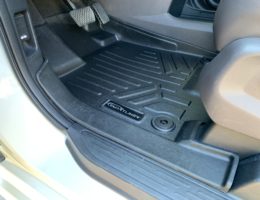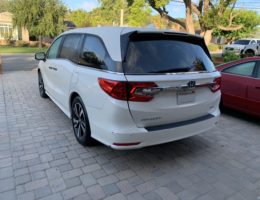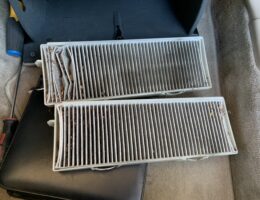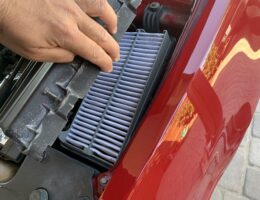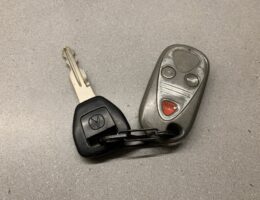I had a hard time finding a car phone mount for the the 5th generation Honda Odyssey (years 2018-2023), but I found that the best option for these cars is a custom fit mount that clips into the left side or the right side of the center console. The most popular brand for this type of custom mount is called Pro Clip USA. Another brand that I came across is called A-Tach Mounts and it costs less than the popular Pro Clip ones.
On the second generation Acura CL (and many other Acura & Honda models), the SRS light may come on and stay illuminated on the dashboard. If you want to resolve the error codes, the only way is to fix the issue that is triggering the SRS code(s) and then reset the SRS light. This usually means replacing the seat buckle that is throwing the code (front driver’s side, front passenger’s side, or either side’s rear seat.) Then, an Acura dealership will be able to reset the SRS diagnostic trouble code. If you own a special OBDII scan tool that can reset SRS codes, you can use that to reset the SRS light.
Essentially you have two main floor mats you can go with: OEM Honda All-Weather Floor Mats or Aftermarket ones. In my opinion, you should always go with custom-fit floor mats, which are the majority of the ones available on the market; these normally go for $100 or more. The universal fit ones may cost less than $100, but they simply won’t fit well and won’t offer very good protection. So I believe it’s a must to go with custom-fit all-weather floor mats. You won’t be short of options when deciding amongst the OEM and aftermarket options.
Before my wife and I had kids, we always joked around about owning a minivan when we were older. Eventually as we needed more cabin space, the reality of needing to purchase one began to set in. We’d debate back-and-forth over who should drive the minivan. But, in the end it didn’t matter because as soon as we had our second child and knew our third was on the way, we both knew it would be likely that’d we be both driving it.
For the Acura CL including the Type-S (model years 2000-2003), it is recommended that the cabin air filter be changed out every 24 months, or every 30,000 miles—whichever comes first. This is the same replacement interval as the engine air filter, so it may make sense to do them both at the same time.
A very simple maintenance item you can do on your 2nd generation Acura CL (including Type-S models) is to replace the engine air filter. This applies to model years 2000-2003. Acura also calls the engine air filter the air cleaner element and recommends replacing it every 30,000 miles or 24 months, whichever comes first. Changing the engine air filter is incredibly easy on this car and takes 5 minutes to do.
The 2nd generation Acura CL utilizes a remote key fob to gain entry into the vehicle. There are times when you may have lost a remote key fob, or need to program an extra one. However, if you do this through the dealership, you may end up paying $100 or more for the remote and for them to program it for you. But, it is possible for you to program your own remote key fob.
One very common issue on the 4th generation Toyota 4Runner is an oil leak that occurs at the front corner of the passenger side valve cover. Changing out the valve cover gaskets on both passenger and driver sides can be a bigger job, but mainly because it can be a bit overwhelming with the amount of parts you need to disconnect or remove. Therefore, it’s very important to be organized when removing parts and to document everything you take apart. Photos along the way help tremendously in guiding you to put everything back in the right order. I hope this guide helps you if you need to replace the valve cover gaskets on your 4.0L V6 (1GRE-FE) 4th Generation Toyota 4Runner.
One of the most common encounters that you’ll have when you start increasing the size of your wheels and tires is the front tires rubbing on the fender liner of your 4Runner. The rubbing will normally occur when your wheel is turned full-lock to the left or to the right. Since there are countless different combinations of wheels, tires, and lifts, everyone will experience something different. This guide will outline the steps it takes to do a fender liner mod so that you can eliminate the front tires rub.

